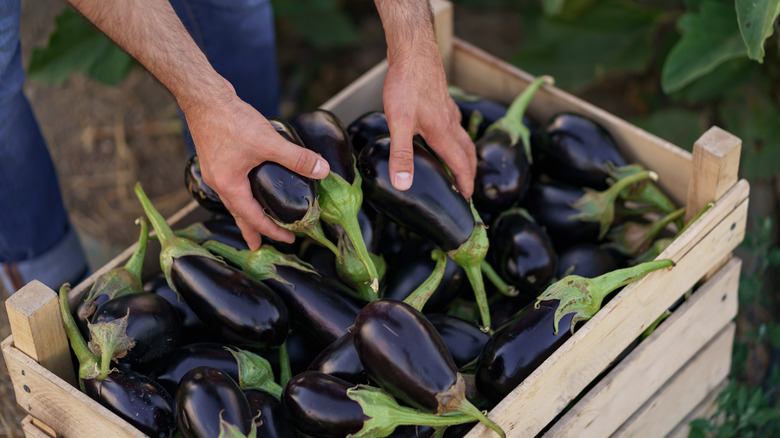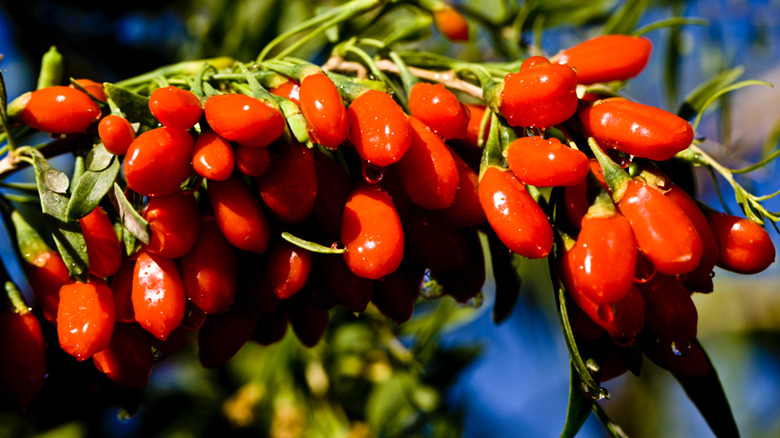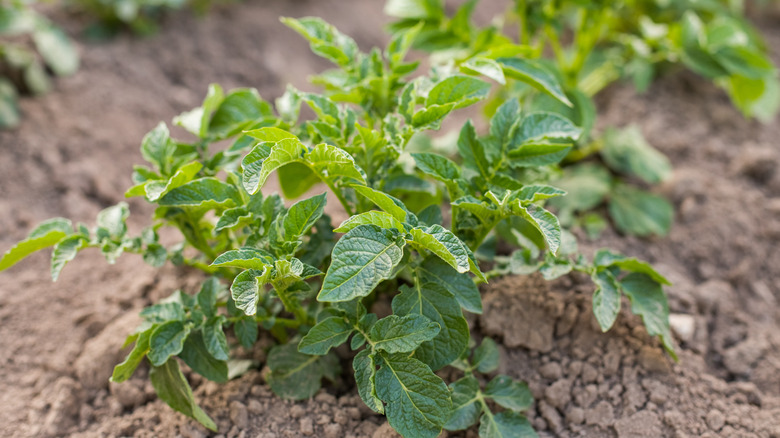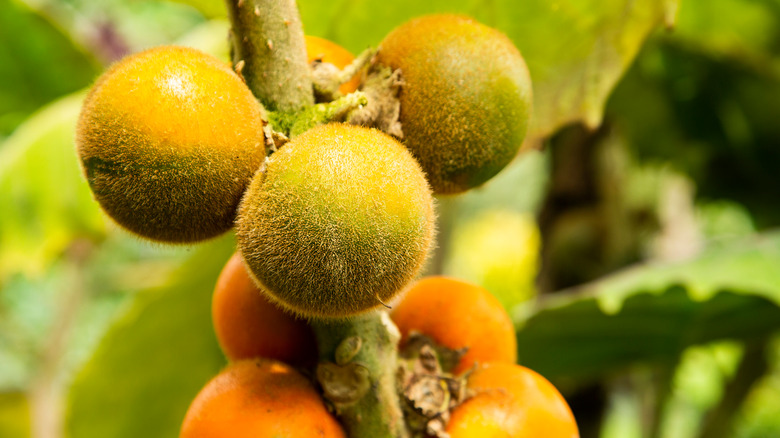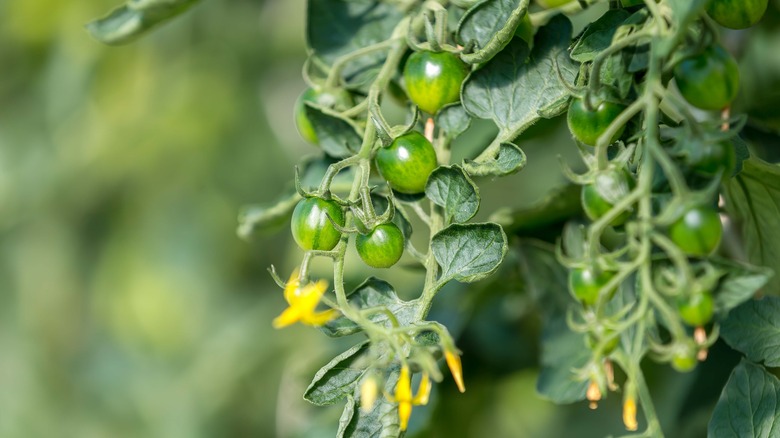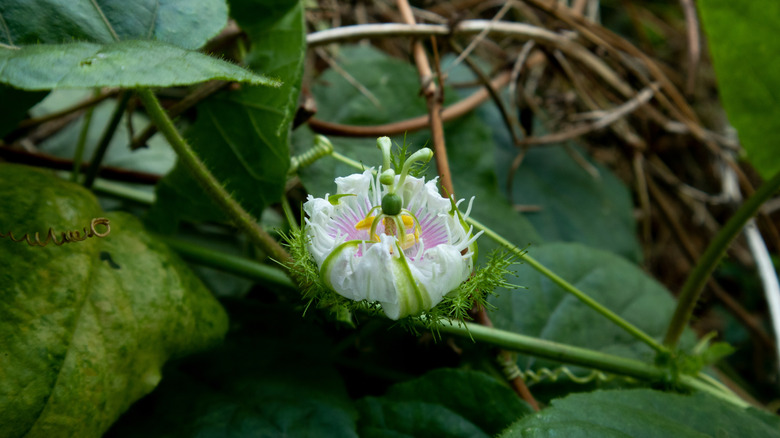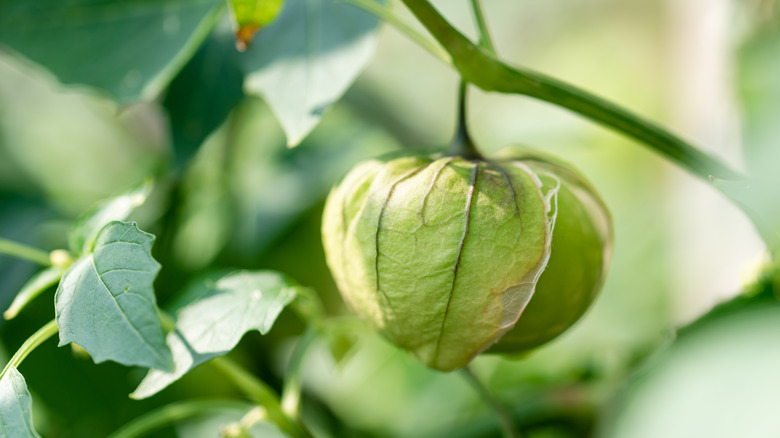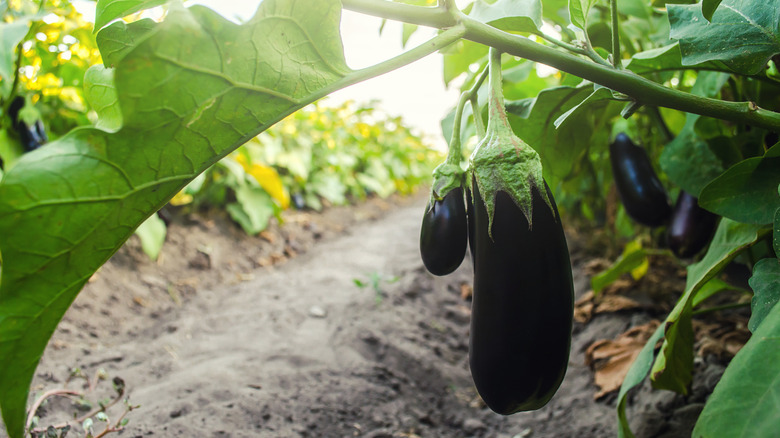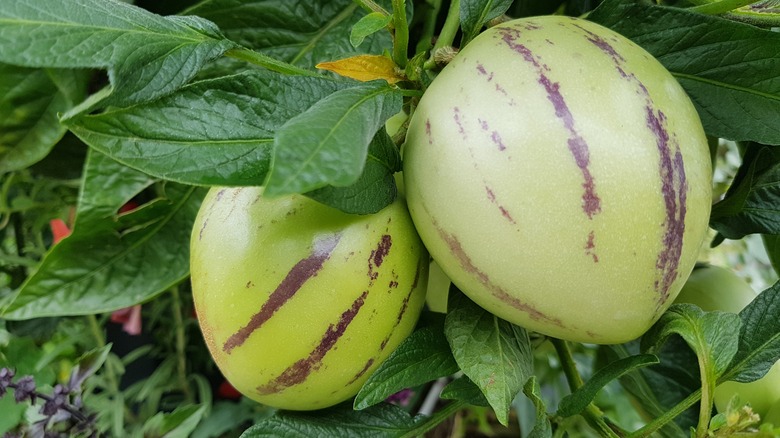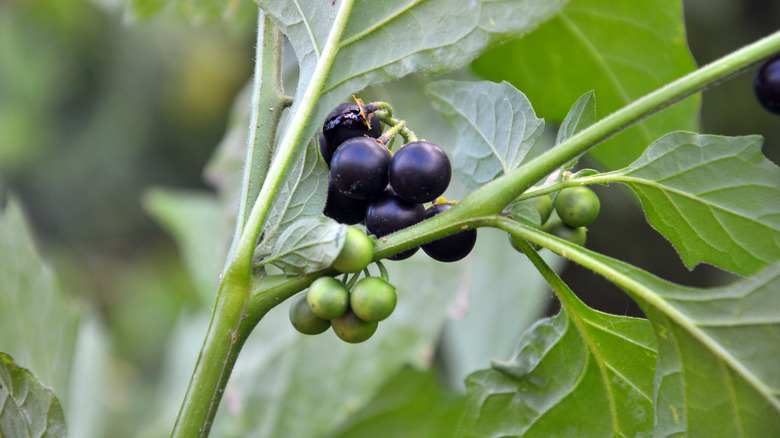10 Nightshade Vegetables Perfect For Your Garden
When you think of the nightshade family, your mind may go to the highly poisonous plants that you're wary about planting in your garden. Likely, you're already familiar with water hemlock, foxglove, and wolfsbane. But what about the nightshade vegetables that are growing in your backyard right now? That's right; your favorite garden-grown fruits and vegetables like potatoes, tomatoes, and eggplant are just as toxic as the ominous deadly nightshade.
Still, that doesn't mean that you shouldn't nurture delicious, home-grown produce, such as tomatillos, pepinos, and cayenne peppers. As long as you know which parts of the plants to avoid, you can be well on your way to making a wonderful organic meal. Some nightshade vegetables are reported to be hard on the stomach and problematic for people with autoimmune diseases or irritable bowel syndrome, as noted by Healthline.
Yet for others, they are a great source of vitamins, antioxidants, or fiber. It's important to understand the risks that come along with consuming products of the nightshade family before choosing one or more of these 10 plants to grow in your own garden.
Goji berry
Goji berries (Lycium barbarum) are also referred to as wolfberries. This low-maintenance plant is known for its large growth habit and invasive nature, explains Plants for a Future. It produces edible fruit that should be fully ripe before consumption. They're not particularly sweet, and they may be cooked for a more vegetable-like taste.
Bloom Season: Summer
USDA Growing Zone: 6 to 9
Growing Conditions: Full sun to partial shade
Soil Type: Well-drained loam, sand, or clay
Size: 8 feet tall and 13 feet wide
Potato plant
Potato plants (Solanum tuberosum) are common garden plants that many don't realize are poisonous. Part of the nightshade family, they sometimes produce round fruits filled with seeds. They are extremely toxic, and they can be fatal to pets and humans if consumed, per North Carolina Garden Extension. Still, the plant's underground tubers are edible and delicious when made into mashed potatoes, french fries, or hashbrowns.
Bloom Season: Summer to fall
USDA Growing Zone: 2 to 11
Growing Conditions: Full sun
Soil Type: Well-drained
Size: 1 to 2 feet tall and 1 foot wide
Naranjilla
Naranjilla (Solanum quitoense) is a herbaceous shrub that produces orange fruit that tastes like pineapple and lemon, according to NewCROP at Purdue University. Before displaying its smooth, leathery produce, the plant also blossoms with fragrant white flowers that hold much ornamental value. The naranjilla plant isn't as toxic as some other nightshade species; however, you should be careful when handling the plant's fruits that are covered in tiny hairs that may irritate the skin.
Bloom Season: Summer
USDA Growing Zone: 10 to 12
Growing Conditions: Partial shade
Soil Type: Well-drained, rich, and organic
Size: 8 feet tall
Tomato plant
Tomatoes (Solanum lycopersicum) are well-known garden plants that are grown all over the United States, especially during the summer. The plants are tender perennials that may be found in several different varieties, but each of them shares many of the same characteristics. For example, as told by Missouri Botanical Garden, tomato plants of this species have many pests and diseases to look out for.
Bloom Season: Summer
USDA Growing Zone: 10 to 11
Growing Conditions: Full sun
Soil Type: Well-drained garden soil
Size: 3 to 6 feet tall and 2 to 3 feet wide
Ground cherry
Ground cherries (Physalis pruinosa) are very similar to your average garden tomato. Sometimes they are called strawberry tomatoes or husk tomatoes, via Ask IFAS at the University of Florida. Ground cherry plants produce round fruit smaller than a tomatillo that is wrapped in a papery husk. The plants do well in home gardens in mild climates where they won't receive too much heat, but also no frost damage.
Bloom Season: Spring
USDA Growing Zone: 4 to 8
Growing Conditions: Full sun
Soil Type: Well-drained loam or sand
Size: 2 feet tall
Tomatillo plant
The tomatillo plant (Physalis philadelphica) is another tomato-like plant in the nightshade family. As per Plants for a Future, the fruit is used in stews and soups where it adds a delicious flavor. When cooking with tomatillos, you should be careful not to eat the calyx that the fruit is naturally wrapped in. It's toxic, much like the leaves, flowers, and stems.
Bloom Season: Summer
USDA Growing Zone: 6 to 9
Growing Conditions: Full sun
Soil Type: Well-drained loam or sand
Size: 3 to 4 feet tall and wide
Eggplant
Eggplants (Solanum melongena) are a popular fruit that grows from a short-lived herbaceous perennial. Like other nightshade vegetables, you must be careful when growing this plant, as the flowers, stems, roots, and leaves all contain poisonous alkaloids including solanine, explains the North Carolina Extension Gardener Plant Toolbox. Still, this plant is easy to grow in the garden and its edible fruit is delicious.
Bloom Season: Summer
USDA Growing Zone: 9 to 12
Growing Conditions: Full sun
Soil Type: Well-drained loam or sand
Size: 2 to 4 feet tall and 1 to 3 feet wide
Cayenne Pepper
Cayenne peppers (Capsicum annuum) grow well in sunny and hot climates, though their soil should be kept consistently moist. These plants are cared for all over the world, and they're used in many traditional dishes in countries such as Italy, Spain, China, India, Holland, and more, per Missouri Botanical Garden.
Bloom Season: Summer
USDA Growing Zone: 9 to 11
Growing Conditions: Full sun
Soil Type: Well-drained and organically rich
Size: 1 to 4 feet tall and 1 to 2 feet wide
Pepino plants
Pepino plants (Solanum muricatum) are most often grown in South America for their sweet, juicy produce. However, in warmer climates, the pepino can be grown in gardens in the United States as well. The fruit of the pepino plants has been likened to honeydew melon and cantaloupe (via The Washingotn Post). This fruit can be eaten fresh like an apple, or it can be used in a fruit salad or cut on top of yogurt.
Bloom Season: Summer to fall
USDA Growing Zone: 8 to 11
Growing Conditions: Full sun
Soil Type: Well-drained loam, sand, or clay
Size: 3 feet tall
Garden huckleberry bush
Garden huckleberries (Solanum nigrum), also called "black nightshade," can be grown in your garden if you live in a warmer climate, such as California, Florida, or Arizona. According to North Carolina State Extension, this annual shrub produces edible berries and leaves, but they must be eaten in limited quantities and cooked before consumption. Care should be taken not to eat the green berries.
Bloom Season: Summer
USDA Growing Zone: 10 to 11
Growing Conditions: Full sun
Soil Type: Well-drained clay, loam, or sand
Size: 1 to 4 feet tall
